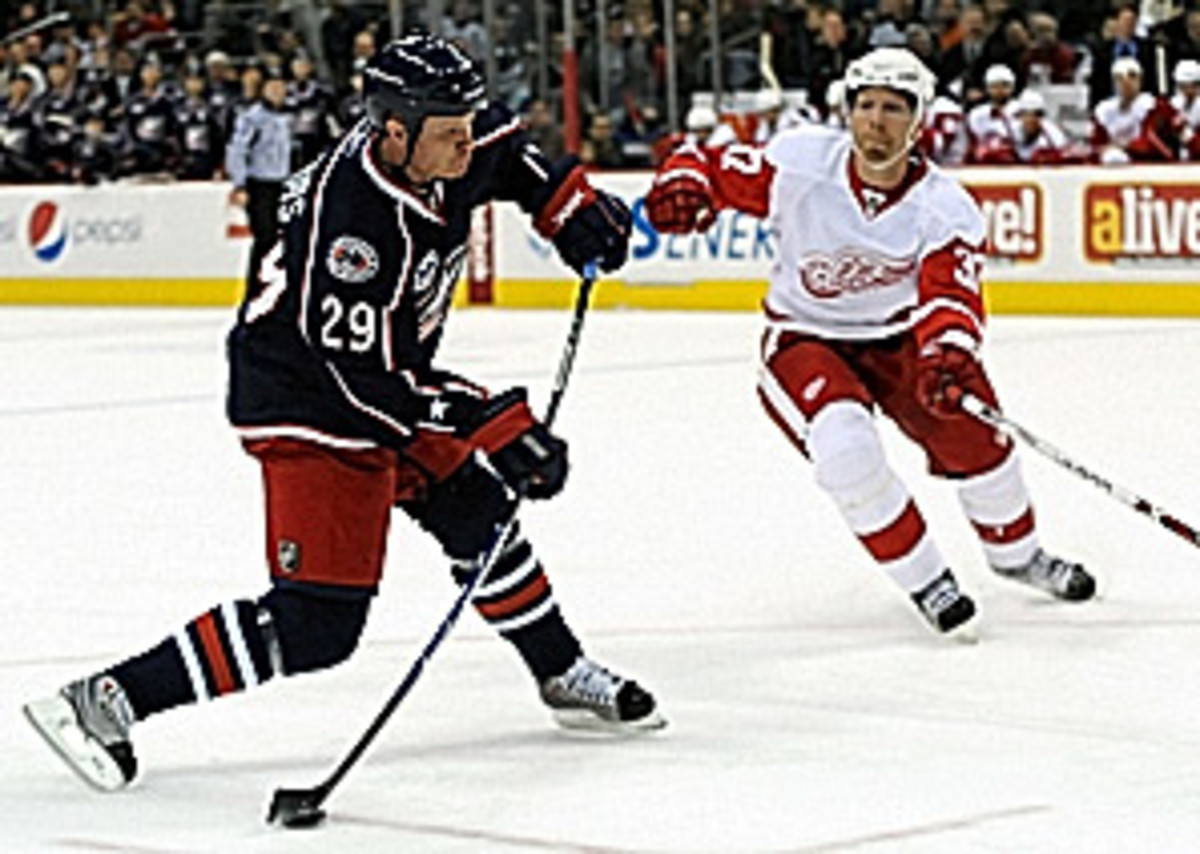Flood of one-year deals is sign of NHL's economic times
As the offseason breezes along, though, signings become single paragraph transaction notes while teams fill roster spots with viable NHL players -- some staying with their original teams with new deals or arbitration awards, while others are on the move to where there is work. In more cases than ever, guys are signing single-season contracts -- 64 in all since the July 1 free agency start date.
Call it a sign(ing) of the times. Uncertain times, certainly, have contributed to the rash of single-season contracts. The specter of a cap number that will go down for the 2010-11 season plays a part as well. The journeyman on the move is a burgeoning component of the Three-Card Monty that is roster-building for teams as they seek to strike a balance between their committed core, their emerging youngsters and plugging dangerous holes. Without the ability to use bonuses and option years as a bridge, as was the norm in years gone by, short-term signings seem all the rage.
That was my impression in tracking the new rash of one-year deals. In talking to different capologists around the league, though, their take was less trend-related. Many of the one-year awards had to do with arbitration settlements. The exceptions were the most notorious cases thus far, involving the New York Rangers and Nik Zherdev, and the Detroit Red Wings and Jiri Hudler. The Rangers walked away from the judge's $3.9 million determination and made Zherdev a free agent. Hudler's two-year, $5.75 million award was an exercise in protocol, as he went ahead and signed with the KHL.
The guys I spoke with who craft contracts for a living also cited players being a year away from outright unrestricted free agency as another reason a one-year deal based on qualifying offers. Add in veteran deals like the one-year pacts agreed to by Brendan Shanahan in New Jersey ($1 million), Mark Recchi in Boston ($1 million), and Keith Tkachuk in St. Louis ($2.15 million) and the point is valid that it isn't just economics at play with those 64 single-season summer inkings to date.
Still, I find the volatility and mechanics behind the movement interesting. Over the course of the offseason, I've chatted with numerous players who are caught in the numbers game. Their agents keep them abreast of interest shown by various teams while trying to match contract hopes with the best possible option from a playing standpoint. For every Travis Moen who cashes in with both take home pay ($1.5 million per annum) and term (three years), there is a Scott Nichol ($750,000), Cody McCormick ($522,500), Patrick Eaves ($500,000) or Jason Williams ($1.5 million) landing a single-season deal at a bargain rate. This is the second summer in succession that Williams has signed with a team for one year. Like the others, he is mainly looking for a place to play.
Truly, the quest for cost certainty has led to more uncertainty for a host of players who are looked upon to fill specific roles, or who provide organizational depth. To that end, I've heard the term two-way contract -- where a player earns vastly different amounts whether he plays in the NHL or the AHL -- bandied about more this summer than in recent memory.
For these players and their agents, knowing the depth chart of any interested team is vital. One defenseman I talked to had several teams interested, but all were offering only a two-way contract. He had been buried on the depth chart with his current organization, so a fresh start seemed reasonable, even if it meant the possibility of going back to the AHL. When his current team came with a two-year deal, with the second season as a one-way, staying and battling seemed the prudent thing to do.
The deal might not have bucked a trend per se, but it felt a whole lot better to the player than any of the single-season look-see offers that came his way. And there were plenty of those on the table this summer. The way the economic breezes are blowing, it appears that such deals will be a fixture of summer for the forseeable future.





